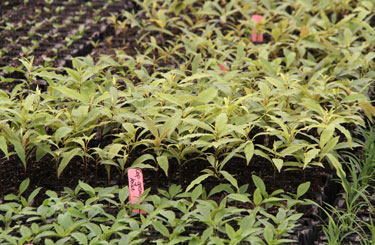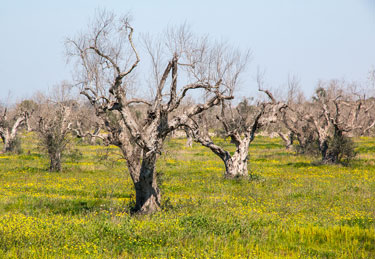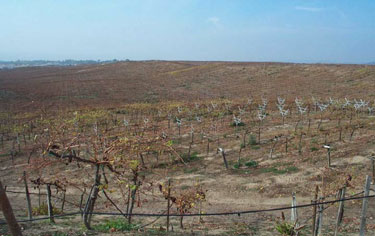Plant Production Biosecurity Scheme background information
Plant producers operate in an environment where they are exposed to significant and continual pest threats - not only from established pest species but also from new incursions.
In 2015 a publication addressing New Zealand pest management, concluded that “New Zealand is under increasing pressure from terrestrial and aquatic pests, weeds and diseases that threaten the country's ecosystems and economy. Ongoing improvement in existing pest management methodologies and novel approaches are required.” It continued: “Surveillance and pest monitoring are needed to increase the chances of early interception of invasive species or to confirm their eradication.”
(Goldson, SL. et al 2015. New Zealand pest management: current and future challenges - Journal of the Royal Society of New Zealand, 2015, 45 (1), pp. 31 - 58)
We’ve experienced pest incursions in increasing numbers over the last 50 years as international trade and travel have grown. Phytophthora cinnamomi; Pythium and Fusarium species are ubiquitous, and like their international counterparts, New Zealand plant producers manage these, and other endemic pests, daily. We work hard to protect our plants, often committing a good deal of resource – time, effort and money - in the process.
The stakes increase considerably as we consider the threat from exotic pests and pathogens. In the last decade, incursions have occurred in other countries that have had devastating consequences over large areas. Significant exotic pests currently include Xylella fastidiosa, Ceratocystis fimbriata, Cryphonectria parasitica (Chestnut blight), Phytopthora ramorum (Sudden Oak Death) and Candidatus Liberibacter asiaticus (Citrus greening). These and others [see below] present a critical risk to plant producers, the environment, the horticultural industry and the economy.
Plant producers are at the frontline in the battle to improve pest management strategies. Our nurseries present a smorgasbord for pests and pathogens; we’ve thousands of plants, in many cases over a wide range of species, and in a juvenile state when they’re often most vulnerable. This provides both opportunity and threat - experience early in the myrtle rust response underscored the crucial role that plant producers play in early detection and slowing the spread following a pest incursion. It also underscored the threat that a pest incursion response poses to individual producers who have a pest detected on their nursery and the disruption that movement controls can have on the affected producer, their families and staff, local communities and other nearby producers.
Additionally, as we ship plants to our customers, our biosecurity hazards are readily spread. Whether our customers are nearby or further afield, our nursery stock distribution pathway has the potential for pests to be rapidly spread throughout New Zealand – and into the environments of our customers. These hazards can spread to:
- food, wine and forestry production;
- conservation, revegetation and restoration programmes; and
- landscape, amenity, retail and home garden markets.
If plantings into the natural and commercial environments increase as we anticipate they will over the next decade, so will the need for biosecurity vigilance. The impact of something going wrong and a nursery-borne pathogen being spread can be devastating.
What can go wrong
- Phytopthora ramorum (Sudden Oak Death) was spread throughout the USA by asymptomatic Rhododendron stock from nurseries in California and Oregon. It caused only minor symptoms to Rhododendrons, but “Sudden Oak Death” caused high mortality in many other tree species. In California alone, over one million trees died as a result of this disease. The disease, and compulsory destruction of potentially exposed stock, has had a wide reaching economic impact on the nursery industry.

- Ceratocystis fimbriata (Rapid ʻŌhiʻa Death) – This fungus is having serious impacts on kiwifruit orchards in Brazil, commonly causing death of between 20 – 30% of vines (although some orchards have lost up to 50% of their vines). A different strain of the same fungus is responsible for rapid ‘ōhiʻa death in Hawaii. It causes widespread dieback in ʻōhiʻa (Metrosideros polymorpha), a close relative of our pohutukawa (Metrosideros excelsa). One of the highest risk pathways for long distance spread of this disease is through plant movements.
- Cryphonectria parasitica (Chestnut blight) – This is one of the most destructive plant diseases ever recorded. It is believed that Chestnut blight was introduced to the USA from Japan on asymptomatic nursery stock. The disease subsequently decimated America’s chestnut population reducing it from four billion trees to just a few remaining stands in the space of 50 years. The blight also removed forest cover from vast areas of the United States, permanently changing the composition of the forest landscape and unleashing enormous impacts on ecosystem diversity and wildlife. Economic losses to the timber industry are estimated to be in the billions of dollars.
- Dothistroma septosporum (Dothistroma needle blight) –In New Zealand, nursery stock of Pinus radiata infected with Dothistroma septosporum spread the disease throughout the country’s plantation forests in the 1970’s. Dothistroma now costs the NZ forestry industry over $23 million a year in losses and $2 million per year in control.

Young nursery stock at Treeline Native Nursery

Rapid Ohia Death in Hawaii (photo credit Lisa Keith, USDA-ARS, DKI DKI PBARC, Hilo, Hawaii, presentation at Myrtle Rust Symposium, Auckland, August 2017)

Xylella impacted olive grove Italy (photo credit Shutterstock 610891697)

Xylella impacted Vineyard in California (Xylella estimated cost to California wine industry $US104m annually)


